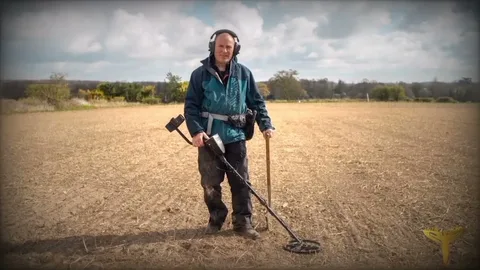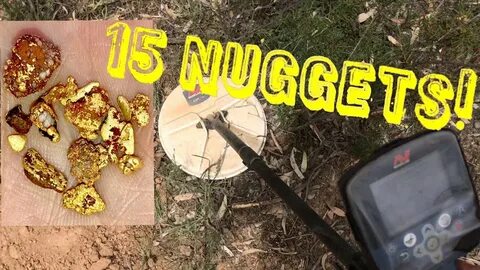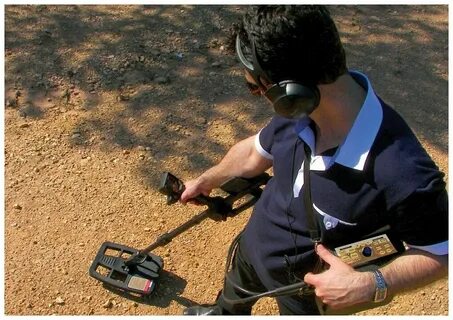Gold pans are essential tools for any aspiring treasure hunter or gold panner. With the right high-quality gold pan, you can uncover hidden treasures and strike it rich. Whether you’re a beginner or an experienced prospector, having the best gold pans can make all the difference in your search for precious metals. In this article, we will explore the benefits of using high-quality gold pans and how they can help you uncover hidden treasure. So grab your gold pans and get ready to start your hunt for
Use high-quality gold pans to uncover hidden treasure in rivers, streams, and other potential gold-bearing areas. These pans are designed to efficiently separate gold from other sediment, making it easier to find and collect valuable flakes and nuggets. Look for pans with steep sides and a wide base for optimal performance. Happy treasure hunting!
The Ultimate Guide to Choosing the Best Gold Pans
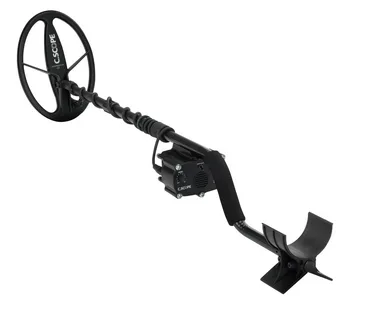
The Ultimate Guide to Choosing the Best Gold Pans is a comprehensive resource for anyone looking to purchase a gold pan. This guide covers everything from the different types of gold pans available to the materials they are made from, as well as important features to consider such as size, shape, and riffle design. It also includes tips for beginners and recommendations for the best gold pans on the market. Whether you are a seasoned prospector or just starting out, this guide will help you make an informed decision when selecting the best gold pan for your needs.
Gold Pans: A Prospector’s Secret Weapon
See also: gold and metal detector
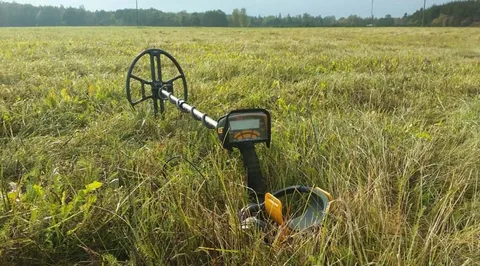
Gold pans are a crucial tool for prospectors looking to find gold in rivers and streams. They come in various shapes and sizes, but are typically shallow, round, and made of plastic, metal, or steel. The design of the gold pan allows prospectors to separate gold from other sediment and materials found in the water. The pan’s ridges and grooves help to capture and hold the gold while allowing lighter materials to wash away. Using a gold pan effectively requires practice and skill, but it remains a fundamental tool for those searching for gold in natural waterways.
Uncover Hidden Treasures with the Right Gold Pan

Uncover Hidden Treasures with the Right Gold Pan
Uncover hidden treasures with the right gold pan by selecting the right size, shape, and material to suit your prospecting needs. Look for a gold pan that is lightweight yet durable, with riffles to help trap the gold particles. Consider the size of the gold pan based on the amount of material you plan to process, and choose a color that will allow you to see the gold easily. With the right gold pan, you can increase your chances of finding valuable gold nuggets and enjoying a successful prospecting experience.
How to Use a Gold Pan Like a Pro

To use a gold pan like a pro, start by finding a suitable location with a good amount of water flow and areas where gold is likely to accumulate, such as inside bends of streams or downstream from large rocks. Once you’ve found a good spot, fill your gold pan with gravel and sand from the stream, making sure to remove any large rocks or debris.
Next, submerge the pan in the water and start shaking it back and forth to allow the water to wash away the lighter material, leaving behind the heavier gold particles. Tilt the pan slightly and continue to shake it, allowing the lighter material to wash away while keeping the gold at the bottom of the pan.
As you get closer to the bottom of the pan, carefully swirl the remaining material in a circular motion to help concentrate the gold at the center. Tilt the pan again and continue to shake and swirl, gradually removing more of the lighter material until you are left with a small amount of black sand and hopefully, some gold.
Finally, carefully remove the remaining black sand and any gold from the pan, being sure not to lose any of the precious metal. Once you’ve finished panning, be sure to properly clean and store your equipment for future use. With practice and patience, using a gold pan can become a skilled and rewarding hobby.
Top 10 Gold Pans for Every Budget and Skill Level
Top 10 Gold Pans for Every Budget and Skill Level is a comprehensive guide that reviews the best gold pans available on the market. It includes information on various gold pans, their features, and their suitability for different budgets and skill levels. The guide aims to help prospectors and hobbyists find the right gold pan for their needs, whether they are beginners or experienced in gold panning. The information provided in the guide can help users make informed decisions when purchasing a gold pan for their gold prospecting activities.
The History and Evolution of Gold Pans
Gold pans have been used for centuries as a tool for prospecting and mining for gold. The earliest known gold pans date back to the time of the California Gold Rush in the mid-1800s. These early gold pans were typically made of metal or wood and were shallow with ridges or grooves to help trap and separate gold from other sediments.
Over time, the design and materials used for gold pans have evolved. Modern gold pans are typically made of high-impact plastic, which is lightweight and durable. They also feature a variety of different shapes and designs, including deep riffles, flat bottoms, and different size options.
In addition to the traditional round gold pans, there are also specialty pans available for different types of gold prospecting, such as sniping and crevicing. These specialized pans are designed to help capture gold in specific situations, such as in tight crevices or underwater.
Overall, the history and evolution of gold pans have led to a wide variety of options available for modern-day gold prospectors, each with its own unique features and advantages.
Gold Pans: Tools of the Trade for Modern-Day Prospectors
Gold pans are essential tools for modern-day prospectors who are searching for gold in rivers, streams, and other waterways. These shallow, round pans are typically made of durable plastic or metal and are designed to capture and separate small gold particles from the surrounding sediments.
Modern gold pans are available in a variety of sizes and designs, ranging from traditional steel pans to more specialized features such as riffles, traps, and ridges to help with the gold capturing process. Some are even equipped with built-in screens to help filter out larger rocks and debris.
Using a gold pan involves a technique known as “panning,” where the prospector gently agitates the sediment and water in the pan to gradually separate the heavier gold particles from the lighter materials. This process requires skill and patience, as well as a keen eye to spot the glimmer of gold amongst the dark sands and gravel.
Gold panning is not only a practical tool for finding gold, but it also carries on a tradition of prospecting that dates back to the days of the California Gold Rush. Today, gold pans remain an important part of the prospector’s toolkit, along with other equipment such as sluice boxes, dredges, and metal detectors. Whether used for recreational gold panning or serious prospecting, gold pans continue to play a valuable role in the search for this precious metal.
Tips and Tricks for Cleaning and Maintaining Your Gold Pan
1. After every use, rinse your gold pan with water to remove any remaining dirt and sediment.
2. Use a mild dish soap and a soft-bristled brush to gently scrub the surface of the gold pan to remove any stubborn dirt or residue.
3. Avoid using harsh chemicals or abrasive cleaners, as these can damage the finish of the gold pan.
4. For tougher stains, you can soak the gold pan in a mixture of water and white vinegar for a few hours to help loosen the dirt.
5. After cleaning, thoroughly dry the gold pan with a clean towel to prevent any water spots or mineral build-up.
6. Store your gold pan in a dry, cool place to prevent any rust or corrosion.
7. If your gold pan develops rust, you can use a fine steel wool or sandpaper to gently remove the rust, then reseason the pan with a light coating of vegetable oil.
8. Periodically check the condition of the gold pan’s edges and bottom for any signs of wear or damage, and consider replacing it if necessary.
9. Avoid dropping or banging the gold pan, as this can cause dents or cracks that may affect its performance.
10. With proper care and maintenance, your gold pan can last a lifetime and continue to provide you with a reliable tool for prospecting and mining.
Gold Pans: Essential Gear for Recreational and Professional Gold Hunting
Gold pans are a crucial tool for anyone looking to engage in recreational or professional gold hunting. These simple, shallow pans are used to sift through sediment in rivers and streams in search of small gold flakes and nuggets. They are typically made of durable, lightweight materials such as plastic or metal, and come in a variety of sizes and designs to suit different preferences and needs. When using a gold pan, it’s important to carefully swirl the sediment and water mixture to allow the heavier gold particles to settle at the bottom, while lighter materials are washed away. Gold pans are essential gear for anyone hoping to strike it rich or simply enjoy the thrill of searching for gold in natural environments.
The Science Behind Choosing the Best Gold Pan for You
Gold panning is a popular and rewarding hobby for many outdoor enthusiasts. The choice of a gold pan is an important decision for anyone looking to partake in this activity. The best gold pan for you will depend on various factors, including the type of gold prospecting you plan to do, the size of the gold you expect to find, and your personal preferences.
The science behind choosing the best gold pan lies in understanding the design and material of the pan. Gold pans come in various shapes and sizes, with different riffles and textures to help separate gold from other materials. The size and shape of the pan will affect its ability to capture gold and its portability for different types of prospecting.
Additionally, the material of the gold pan is important to consider. Plastic pans are lightweight and resist rusting, making them great for beginners and those who plan to pan in wet conditions. On the other hand, metal pans are more durable and can be used to break up hard-packed material, but they are heavier to carry.
Ultimately, the best gold pan for you will depend on your specific needs and preferences. It’s important to consider the science behind pan design and material to make an informed decision when choosing the best gold pan for your prospecting adventures.

